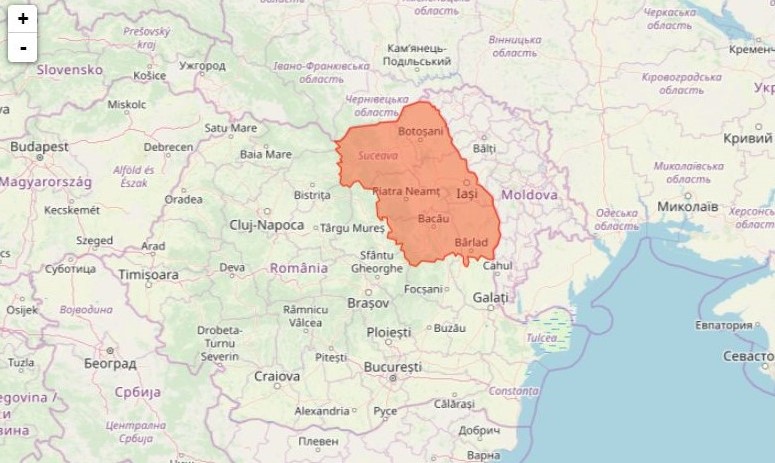Water supply and waste water infrastructure in Suceava county, north-eastern Romania, is being upgraded to strengthen compliance with the EU’s Drinking Water and Urban Waste Water directives. Work on both the water and waste water systems encompasses 14 localities that are home to a total of 220 000 people.
Safer drinking water and increased sewage collection in Suceava county, Romania
- 14 May 2020
The upgrades will increase the domestic connection rate to the supply network from 75 % to 95 % and the percentage of the population with access to a drinking water supply that meets national and European quality standards from 65 % to 95 %.
They will increase the connection rate to the sewerage network from 72 % to 94 % and the percentage of waste water that is collected and treated in line with relevant standards from 52 % to 94 %.
New water sources and infrastructure
Water supply deficiencies include incomplete network coverage, low connection rates in the countryside, insufficient capacity of some water sources, poor protection against source pollution and deficient treatment processes due to worn out equipment. Treatment and pumping stations, storage tanks and pipes are ageing, leading to leaks, poor water quality and a need for recurrent repairs.
Covering 12 supply systems, tasks under the project involve constructing three wellfields, three treatment plants, 22 pumping stations and five storage tanks. In addition five wellfields, three treatment plants, four pumping stations and 13 storage tanks will be rehabilitated.
A total of 8.3 km of transmission main and 295.4 km of distribution network pipe will be laid and 29.4 km of transmission main and 18.9 km of distribution pipe rehabilitated.
Waste water connections
The waste water networks have low connection and coverage rates, insufficient centralised collection systems and effective treatment plants, and worn out pipes. This results in high levels of infiltration, leakage and clogging. Untreated domestic waste water is often discharged into streams.
To correct this, four waste water treatment plants will be built and three renovated. A total of 107 waste water pumping stations will be constructed, to be served by 40.3 km of overflow pipe. Sewerage pipes totalling 321 km in length will be laid, and 4.6 km of pipes will be rehabilitated.
Leak detection and sludge transportation, loading and handling equipment, laboratory equipment for testing of drinking water, two mobile CCTV units, 10 mobile sewerage cleaning units and seven mobile units for disposal of waste from pumping stations are to be purchased.
Currently, both the water supply and waste water networks lack supervisory control and data acquisition (SCADA) and automation systems for network monitoring and operation. Facilities covered by the project will be equipped with such systems and a centralised regional SCADA system will be developed.
Health and environmental benefits
The project will create 425 temporary jobs. The aim is to benefit public health by improving the quality of drinking water and effluent, including by cutting infiltration of sewers and ensuring proper treatment of sewage prior to discharge. This will help clean up drinking water resources in the long term by preventing contamination of groundwater, leading to healthier rivers, ecosystems and subsoil.
The introduction of modern data management systems will bolster intervention capacity in the event of infrastructural damage. More efficient detection is expected to reduce leakage from 16.5 million cm³ to 13.2 million cm³.
Total investment and EU funding
Total investment for the project “Development of water and waste water infrastructure in Suceava county between 2014 and 2020” is EUR 277 455 572, with the EU’s Cohesion Fund contributing EUR 187 346 639 through the “Large Infrastructure” Operational Programme for the 2014-2020 programming period. The investment falls under the priority “Development of environmental infrastructure under conditions of efficient resource management”.

